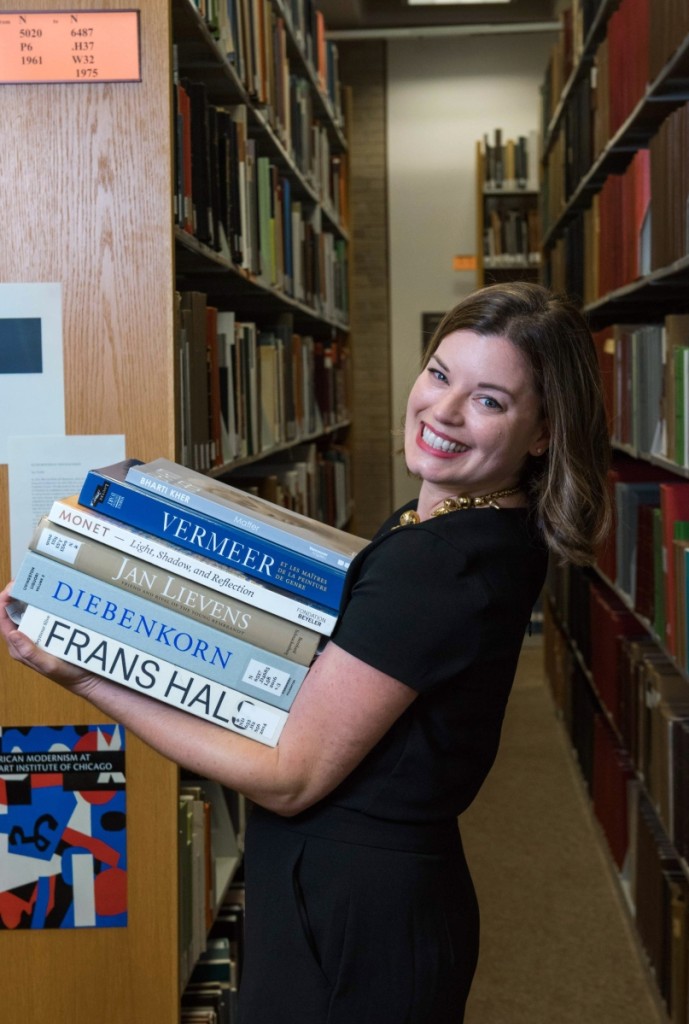
Jennifer Dasal is the associate curator of contemporary art at the North Carolina Museum of Art, where she has been employed since 2008. She holds an MA in art history from the University of Notre Dame as well as a BA in art history from the University of California, Davis. She has also completed PhD coursework in art history at the Pennsylvania State University. Her research expertise includes contemporary art with a particular interest in women artists and Asian art. She has curatorial “cred.” On the side, however, Dasal hosts the ArtCurious Podcast, a biweekly show exposing the unexpected, the slightly odd and the strangely wonderful in art history. Rather than droning on about archaic art terminology, like chiaroscuro or contrapposto, or the importance of linear perspective, Dasal is interested in the juicy stuff – did Van Gogh actually commit suicide? Was a British painter actually Jack the Ripper? And how did the CIA covertly support Modern art?
How did you come to create this podcast series?
As someone who deeply loves art and art history, I became frustrated with those who would frequently tell me that they thought art was “boring.” In reality, it can be anything but – especially when there are all sorts of funny, strange and incredible stories about a work of art, its creator or its meaning. The ArtCurious Podcast is a way to share these stories – and, as I always say, if you just happen to learn something along the way, that’s just gravy.
You recently hit your one-year anniversary. How many subscribers or streamers do you now have – and who are they?
I am proud and humbled to say that I now have more than 10,000 subscribers with downloads coming in from nearly 80 separate countries. And from the response that I’ve gotten, it seems that both art lovers and total art novices are listening and enjoying the show – and for me, that’s everything, because I believe that art is available to everyone, regardless of background, creed or orientation.
Did you always have a fascination for what you describe as “storytelling about the weird and the fun in art history”?
The stories that I learned in art history classes were what originally brought me to the subject – and I was someone who used to think that art was boring, too. So it was always the tales that grabbed my interest. Sometimes you just need a really juicy story to get you to want to learn a little bit more.

In its second season, ArtCurious is delving into topics ranging from combat art, war propaganda, the fabled Monuments Men, postwar repatriation and one of the most infamous “failed artists” of all time: Adolf Hitler. Tom Lea, “The 2,000-Yard Stare,” 1944, oil on canvas. Image courtesy the Tom Lea Institute, El Paso, Texas.
What might spark the idea for an episode topic?
It can really be anything: a suggestion from a listener or fan, a story I remember from a book I read years ago or simply a topic that I’m personally curious about. In the move from single-source episodes to a larger, more thematic “season” – which I launched at the end of July – I have had the broader subject matter determine more of the content, which has been freeing in a way.
Do you get any ideas from your listeners? And if so, what’s the mechanism?
Yes, definitely. I frequently get emails via my website – artcuriouspodcast.com – with requests and recommendations for episodes. But I am also reached via my social media channels: Facebook, Twitter and Instagram.
How did you become a museum curator?
Through a lot of luck and some hard work. After pursuing a PhD in art history for a few years, I determined that academia was never the goal – and a museum career was. I had the supreme luck of cold-emailing the woman who would become my boss, and she ended up having an opening in the curatorial department. I fell into this job and have never taken that for granted. Being a curator is a challenge and a privilege.
Any advice for someone at a crossroads in choosing a career?
My advice is twofold: first is to let yourself be open to accidents and opportunities. I was originally a science major who didn’t consider a career in art. I fell into it and it changed my life. You never know what might spur your interest, so stay open. Second, don’t be afraid to try something that seems out-of-the-blue. Make that cold call. Introduce yourself to a stranger whose work you admire. It might lead to something.
ArtCurious may be found on services including iTunes, Stitcher, TuneIn Radio, Google Play, SoundCloud and podcast hubs like Blubrry and Overcast. The show is accessible on both desktop and mobile platforms.
–W.A. Demers




